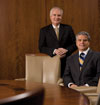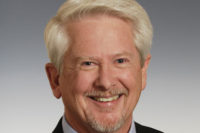
“In 30 years, this was the first time I saw this happen.”
A SHARED FOCUS
Deaton joined Baker Hughes in late 2004 and brought Cancilla on board as CSO in mid-2006, reporting to the general counsel. Before that time, the corporate security function at the company worked independently from security operations teams. In fewer than three years, Cancilla restructured corporate security into an enterprise security and crisis management (ESCM) function built around a security business model. The move to ESCM has improved the planning, execution and management of security programs enterprise-wide and better aligned security activities with Baker Hughes’ business model.
Among other changes, Cancilla has also helped develop a security assessment process that requires all security personnel to conduct standard business S.W.O.T. (strength, weaknesses, opportunities and threats) analyses to identify emerging markets and opportunities and assess risks. Russ Cancilla is a member of the Security Executive Council.
Improvements like these led to Cancilla’s promotion in January, by which the company combined the functions of security and health, safety and environment and brought them under him as corporate vice president. Now he reports directly to Deaton with a seat on the corporate strategic policy council.
Deaton believes the change just made common sense. “We have a significant number of people all around the world. In this oilfield service sector, like any multi-national, we have a lot of exposure. And as we move into countries that sometimes have a lot of problems; it’s critical that we look after the security and the safety of our people, which are closely linked. It’s very important for us to make sure the senior management team understands the risks we’re faced with,” he said.
Cancilla’s impressive performance as CSO clearly paved the way for strong future collaboration with his CEO. In order to continue the successes that have brought them this far, Deaton and Cancilla must maintain a common and articulated focus on the well-being of the business.
BUSINESS FIRST
“I expect our CSO, just as I expect our CFO or General Counsel, not to focus on only his particular function but to look at strategy in general,” said Deaton.
BUILDING TRUST ACROSS THE ORGANIZATION
Deaton says focusing on the business is the primary action Cancilla can take to help them maintain a strong working relationship. The second is satisfying the leadership at all levels all across the company.


